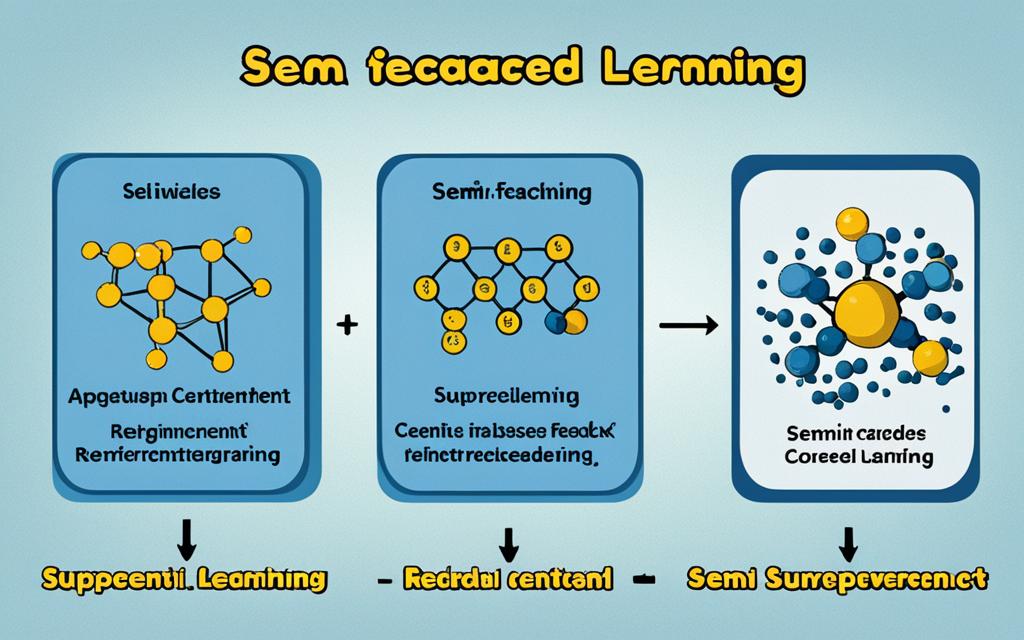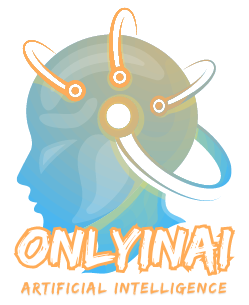Did you know machine learning algorithms are behind many daily technologies? They help with everything from personalized product suggestions to self-driving cars. These tools are key to some big AI advances. I’ll show you how machine learning algorithms work and their impact on our digital world.
Key Takeaways
- Machine learning algorithms are the foundation of many cutting-edge technologies we use daily.
- Unlike traditional programming, machine learning allows computers to learn and improve from experience without explicit programming.
- The machine learning process involves training data, model optimization, and making predictions or classifications.
- There are various types of machine learning algorithms, including supervised, unsupervised, and reinforcement learning.
- Understanding how machine learning algorithms work is crucial for using them in different industries and applications.
Introduction to Machine Learning Algorithms
Machine learning is changing how we solve problems and make decisions. It’s a part of artificial intelligence that lets computers learn and get better on their own. They don’t need to be told exactly what to do. Instead, they look at data, find patterns, and make predictions by themselves.
What is Machine Learning?
Machine learning is more than just coding. It’s about letting computers learn from data and make smart choices on their own. This way, they can handle complex tasks like recognizing images, understanding language, and predicting trends more efficiently.
The Importance of Machine Learning Algorithms
Artificial intelligence and machine learning are becoming a big part of our lives. Leaders and decision-makers need to get what these technologies can do. Machine learning algorithms are changing many industries, from healthcare to e-commerce. They use data and self-learning to find insights, automate tasks, and give us personalized experiences.
Machine learning is more flexible and adaptable than traditional programming. It doesn’t stick to a set of rules. Instead, it learns and gets better over time. This makes it perfect for complex, changing situations. It’s why machine learning is so valuable in today’s data-driven world.
How Machine Learning Algorithms Work
As a machine learning enthusiast, I find the inner workings of these algorithms fascinating. At their core, they use three main parts: data, model training, and prediction. Knowing these elements helps us understand how they work their magic.
The Three Main Components
The first step is data gathering and preparation. This involves collecting numbers, images, text, or other info for training. Then, programmers pick a machine learning model and feed it the data. This lets the computer train itself and find patterns or make predictions.
The model training process is where the magic is. The computer looks at the training data, finds relationships, and trends. This helps it make accurate forecasts on new data. Over time, the model gets better and more precise.
Finally, the model is tested with prediction. When given new data, it uses what it learned to make smart guesses or classifications. This ability to learn from data, not just code, makes machine learning so powerful and changing.
Understanding data, model training, and prediction helps us see the power of machine learning algorithms. They can find insights and make predictions from complex data. This is truly amazing and is shaping the future of technology.
Types of Machine Learning Algorithms
Machine learning algorithms are key in artificial intelligence. They help us find new insights and solve complex problems. There are three main types: supervised, unsupervised, and reinforcement learning. Knowing the differences helps us use machine learning effectively.
Supervised Learning Algorithms
Supervised learning algorithms are very common. They learn from labeled data, where each piece of data has a correct answer. This way, they learn to spot patterns and make predictions. They’re great for tasks like classifying things or predicting values.
Unsupervised Learning Algorithms
Unsupervised learning algorithms don’t need labeled data. They find hidden patterns and connections in data on their own. This is useful for things like grouping similar items or finding unusual data points.
Reinforcement Learning Algorithms
Reinforcement learning algorithms learn by trying different actions and seeing the results. They aim to get a reward for their actions. This method is great for complex tasks like playing games, controlling robots, or optimizing resources.
Knowing about the different machine learning algorithms is crucial. Choosing the right one helps us gain new insights and solve tough problems in new ways.
Supervised Learning Algorithms
In the world of machine learning, supervised learning algorithms are key. They learn from labeled data, where the correct answers are given. This helps them make better guesses on new data they haven’t seen before.
There are two main types: classification algorithms and regression algorithms. Classification algorithms predict things like whether an email is spam or not. Regression algorithms predict things like future stock prices or when equipment might fail.
Classification Algorithms
Classification algorithms look for patterns in the data to sort new data into groups. They’re used in things like recognizing images, sorting texts, and spotting fraud. Some top algorithms are Logistic Regression, Decision Trees, and Support Vector Machines.
Regression Algorithms
Regression algorithms predict continuous numbers, like future prices or how long something will last. They’re used for forecasting and planning. Some top algorithms are Linear Regression, Polynomial Regression, and Random Forest Regression.
Both types of algorithms are vital for training machine learning models. Knowing their differences helps data scientists pick the right one for their tasks.
Unsupervised Learning Algorithms
Supervised learning uses labeled data for predictions. Unsupervised learning looks at unlabeled data to find hidden patterns. It helps us understand our data better. Clustering algorithms are key, grouping similar data points together.
Clustering algorithms are useful in many areas. They help in market analysis, customer profiling, and more. By finding new groups, they help us make better decisions and discover new things.
Clustering algorithms are great for exploring data. They don’t need labels to find patterns we might miss. This leads to new insights that can change the game.
Unsupervised learning algorithms are useful for any unlabeled data. They use pattern recognition and data exploration to find hidden treasures. This can lead to big breakthroughs.
Semi-Supervised and Reinforcement Learning

In the world of machine learning, we often think of two main types of algorithms: supervised learning and unsupervised learning. But, there are two more approaches that work well in certain situations – semi-supervised learning and reinforcement learning.
Semi-supervised learning uses both labeled and unlabeled data to train models. This is great when getting labeled data is hard or costly. By using both kinds of data, the algorithm can spot patterns and insights it might have missed otherwise.
Reinforcement learning trains machines by giving them rewards or punishments. The algorithm tries different actions and sees how well they work. This method is great when it’s hard to explain what the right action is, like in complex decisions.
Semi-supervised and reinforcement learning have their own strengths. They can be big additions to the machine learning algorithms toolkit. As you learn more about machine learning, it’s key to know how these approaches work and when to use them.
The Advantages of Semi-Supervised and Reinforcement Learning
- Can be effective when labeled data is scarce or expensive to obtain
- Allows for learning from a combination of labeled and unlabeled data (semi-supervised)
- Enables learning through trial and error, rather than explicit instruction (reinforcement)
- Can be particularly useful in complex, dynamic environments where the desired behavior is difficult to specify
- Offer additional flexibility and problem-solving capabilities beyond supervised and unsupervised machine learning approaches
As you keep exploring machine learning algorithms, remember these powerful techniques. They can open up new possibilities and help you solve tough problems.
Explain how a Machine Learning Algorithm Works
Understanding how a machine learning algorithm works is crucial. It’s all about a cycle where the algorithm predicts, checks its work, and gets better over time.
The Learning Process
The learning process is a loop with three main parts: deciding, checking errors, and making the model better. First, the algorithm uses the data it gets to make predictions. Then, it checks how right it was by comparing its guesses with the real results.
Finally, it changes its settings to make fewer mistakes, so it does better next time.
Training Data and Model Optimization
Getting the training data right is key for a machine learning algorithm. The data it learns from affects how well it does. Also, making the model better by adjusting its settings is important for top performance.
This model optimization makes the algorithm learn better from the training data. It helps cut down on mistakes and boost the model’s performance.
| Key Component | Description |
|---|---|
| Decision Process | The algorithm makes a prediction or classification based on the input data. |
| Error Function | The algorithm evaluates the accuracy of its prediction using a quantitative measure of the difference between the predicted and actual outcomes. |
| Model Optimization | The algorithm adjusts its internal parameters to minimize the error, improving its future performance. |
Popular Machine Learning Algorithms
In the world of artificial intelligence and data analysis, many machine learning algorithms stand out. Neural networks, deep learning, decision trees, and random forests are among the top ones. Each has its own strengths and uses, making them key in many industries and situations.
Neural Networks and Deep Learning
Neural networks and deep learning mimic the human brain’s structure and function. They’re made up of nodes that connect and learn by adjusting their connections. This lets them do things like recognize images, understand language, and predict outcomes.
Decision Trees and Random Forests
Decision trees and random forests are also big in machine learning. They use a tree-like structure to make predictions from data. Decision trees look at one feature at a time, while random forests use many trees together for better accuracy. These are great for predicting equipment failures, spotting fraud, and figuring out customer behavior.
| Algorithm | Key Strengths | Common Applications |
|---|---|---|
| Neural Networks | Excellent at pattern recognition, adaptable to complex problems | Image recognition, natural language processing, predictive modeling |
| Deep Learning | Ability to learn from large, unstructured datasets, high accuracy | Computer vision, speech recognition, language translation |
| Decision Trees | Intuitive, easy to interpret, handle both numerical and categorical data | Predicting equipment failures, identifying credit card fraud, classifying customer churn |
| Random Forests | Increased accuracy and robustness compared to single decision trees | Predictive modeling, classification, regression |
These algorithms are crucial in many areas, from image recognition to understanding language to predicting outcomes. By knowing what each algorithm does best, experts can use them to find new insights and innovate in various fields.
Machine Learning Algorithm Selection

Choosing the right machine learning algorithm is tough because there are so many options. But, by looking at a few key factors, data scientists can pick the best one for their needs.
Factors to Consider
The size and type of data you have are key when picking an algorithm. Different algorithms work better with different data sizes and problem types (like classification or regression).
Also, think about how clear the model needs to be. Some algorithms, like decision trees, are easy to understand. Others, like neural networks, can be harder to grasp. The level of clarity you need depends on your project and who will use the results.
- Data size: Know how big and complex your data is to pick the right algorithm.
- Problem type: Pick an algorithm that fits the task you’re tackling (classification, regression, clustering, etc.).
- Model interpretability: Think about how much clarity you need for your project.
There’s no single best algorithm for every situation. But, looking into the strengths and weaknesses of various machine learning algorithms can guide your choice. Sometimes, testing different algorithms and comparing their results can help you find the best one for your project.
Applications of Machine Learning
Machine learning algorithms are changing many industries, making our lives better every day. They help with tasks like understanding languages, suggesting products, and even driving cars. These algorithms are great at recognizing patterns, predicting outcomes, and making decisions.
Machine learning is amazing at finding new insights and helping make better choices. It’s changing how we spot fraud, diagnose diseases, and manage supply chains. As data grows, so will the need for machine learning, artificial intelligence, and predictive analytics. They will shape our decisions and business plans.
Some cool ways machine learning is used include:
- Personalized product recommendations
- Fraud and anomaly detection
- Predictive maintenance and supply chain optimization
- Medical diagnosis and drug discovery
- Intelligent personal assistants and language translation
- Autonomous vehicles and robotics
Machine learning is always getting better, opening up new possibilities. By using these algorithms, companies can become more efficient, innovative, and customer-focused. This helps them stay ahead in a world filled with data.
Challenges and Limitations
Machine learning algorithms have a lot of potential but face big challenges and limitations. It’s important to know these as we use these powerful tools more.
Data Quality and Bias
One big issue is the quality and representativeness of the data used to train machine learning models. If the data is biased or missing, the models will be too. This can cause algorithmic bias – models making unfair or discriminatory decisions. It’s key to have high-quality, diverse, and unbiased data for challenges of machine learning.
Interpretability and Transparency
Advanced machine learning techniques, like deep neural networks, are hard to understand. They’re like “black boxes” – we don’t see how they make their decisions. This model interpretability challenge is a big problem, as it’s hard to trust and check the decisions of these algorithms. Making AI more transparent and explainable is a top priority.
| Challenge | Description |
|---|---|
| Data Quality | Ensuring training data is representative, unbiased, and of high quality |
| Algorithmic Bias | Preventing machine learning models from making unfair or discriminatory decisions |
| Model Interpretability | Improving the transparency and explainability of complex machine learning algorithms |
Fixing these challenges with responsible data practices and better explainable AI is key as machine learning spreads. It’s vital to understand both the good and bad sides of these algorithms.
Conclusion
Looking back at our journey into machine learning algorithms, I’m amazed by their potential. They’re changing our lives and industries in big ways. From making new tech work better to helping in healthcare and finance, these algorithms are just getting started.
Machine learning lets us learn from data directly. This means we can find new insights and make predictions humans can’t. It opens up new possibilities. We can solve complex problems and make better decisions.
For example, it helps predict customer behavior, improve supply chains, and advance medical research. The uses of machine learning are endless.
But, like any powerful tech, machine learning comes with challenges. We need to deal with bias, make sure it’s transparent, and use it responsibly. By facing these issues and improving how we use it, we can make machine learning a key tool for everyone.


